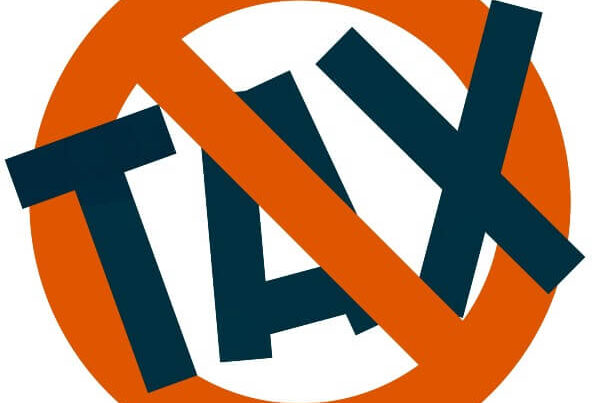What if the secret to your ecommerce success isn’t a trendy marketing hack or a viral product, but a simple financial tool – a budget? A budget gives you control over your finances and drives sustainable growth.
Ecommerce businesses often struggle with unexpected expenses, cash flow issues, and unclear profitability. Without a budget, overspending and financial stress are inevitable.
In this guide, you’ll discover why budgeting is essential for your ecommerce business and how to create one that helps you plan expenses, allocate resources, and stay profitable. For a deeper dive, check out our podcast episode on budgeting and forecasting.
Let’s get started!
 Key Takeaways
Key Takeaways
- Budgeting is essential for financial success. Budgeting isn’t just a boring numbers exercise. It’s your roadmap to financial success. It helps you control your finances, plan ahead, and drive sustainable growth.
- Start with gross profit margin (GPM). It shows you how much revenue is left after covering product costs. This key number forms the foundation of your budget.
- Net profit margin (NPM) reflects your true profitability. Your NPM shows how much profit you keep after expenses, giving you a clear view of your business’s true profitability.
- Allocate operating expenses strategically. Use your GPM and NPM to allocate revenue for marketing, payroll, and other expenses while safeguarding profitability.
- Budgeting helps manage cash flow challenges. Pair your budget with a cash flow forecast to anticipate expenses, fill funding gaps, and avoid surprises.
- Regular reviews keep your budget on track. Your budget is a living tool that requires regular updates. Compare planned vs. actual results monthly, adjust for unexpected changes, and use reviews to refine your strategy.
Table of Contents
- Key takeaways
- 3 reasons why every ecommerce business needs a budget
- How to create an ecommerce budget
- Common challenges with budgeting
- How to get help creating a budget for your business
Why Every Ecommerce Business Needs a Budget
Here are three key reasons why every ecommerce business needs a budget:
- Gain financial control
- Plan and manage cash flow
- Model and ensure profitability
Gain Financial Control
A successful ecommerce business requires more than just keeping an eye on your bank balance. Relying solely on what’s in your account at the moment can lead to overspending or unexpected shortfalls.
A budget gives you the financial control needed to make intentional, informed decisions.
It does this by helping you:
- Allocate funds with purpose: Plan your spending in key areas like marketing, inventory, and operations rather than reacting to what’s available.
- Set clear spending boundaries: Define limits for each category to avoid overextending.
- Avoid financial surprises: Anticipate expenses and allocate resources in advance.
Example: Without a budget, you might overspend on marketing during a busy season, leaving no cash for restocking your inventory. A budget prevents this by ensuring every dollar is purposefully allocated.
Pro Tip: Review your budget monthly to compare planned vs. actual spending. This simple habit helps you spot patterns, catch overspending early, and make adjustments to stay on track.
A budget gives you clarity and control over your finances, so you can focus on growth instead of worrying about unexpected expenses. With a clear plan, you’re always in the driver’s seat.
Plan and Manage Cash Flow
Cash flow is the lifeblood of an ecommerce business, and poor cash flow management is one of the top reasons businesses fail.
Without a clear budget, many businesses find themselves running out of cash at critical moments, such as during peak seasons or large inventory purchases.
A budget supports your cash flow by helping you:
- Anticipate big expenses: Plan for inventory restocks, subscription fees, or marketing campaigns in advance to avoid financial strain.
- Prepare for recurring costs: Include predictable expenses in your budget so they don’t catch you off guard.
- Align with cash flow forecasts: Map out when money is coming in and going out, allowing for more precise planning.
Example: If your budget shows you need to make a $20,000 inventory purchase in May, but your cash flow forecast predicts a shortfall, you can secure financing or delay non-essential expenses to stay on track.
Pro Tip: Use a 13-week cash flow forecast with your budget to identify gaps, plan for financing, and adjust spending with confidence.
By combining budgeting and cash flow forecasting, you’ll spot issues early, take control of your finances and manage your business’s growth sustainably.
Model and Ensure Profitability
Fast growth is exciting, but without profitability, it leads to stress and burnout. A well-constructed budget ensures every dollar works toward your long-term goals.
Budgeting helps you stay profitable by helping you:
- Align expenses with revenue: Allocate percentages of your revenue to categories like marketing, payroll, and tech.
- Make informed decisions: Let your budget guide choices on marketing, hiring, and scaling.
- Avoid overspending: Set clear limits to prevent eating into your profits.
Example: If your monthly revenue is $100,000, you might allocate:
- 10% to marketing ($10,000),
- 20% to payroll ($20,000),
- Balance the rest among other expenses and profit.
With these boundaries, you can scale intentionally while protecting your bottom line.
Pro Tip: Use a profit-first approach – allocate your profit goal first. Then plan expenses around it to ensure the health of your bottom line always comes first.
By focusing on profitability as a foundation, your budget becomes more than just a financial tool—it becomes your roadmap to sustainable growth and long-term success.
For more information about Profit First, watch How to Use Profit First to be More Profitable (for ecommerce sellers).
How to Create an Ecommerce Budget for Your Business
Building a budget might seem daunting but breaking it into clear steps makes the process manageable. With just a few actions, you’ll gain clarity on where your money goes and how to make it work harder for you.
Before we get started, it may be helpful to watch this video to understand more about the different pieces involved in creating an accurate budget:
Here are the steps of what you need to take:
- Step 1: Calculate your gross profit margin (GPM)—the foundation of your budget.
- Step 2: Determine your net profit to set profitability goals aligned with your growth.
- Step 3: Allocate expenses to key categories like marketing, payroll, and operations.
- Step 4: Set realistic sales goals using historical data and future projections.
- Step 5: Regularly review and adjust your budget to stay aligned with actual performance.
As you start this process, a helpful tool is our free Ecommerce Budgeting Template. It’s an Excel template that walks you through every part of creating a solid, reliable budget.
Step 1: Calculate Your Gross Profit Margin (GPM)
Your gross profit margin (GPM) is the foundation of your budget, showing how much revenue remains after covering the direct costs of your products (COGS). Without an accurate GPM, creating a reliable budget is nearly impossible.
What is Gross Profit Margin?
Here’s the formula: GPM = ((Sales – COGS) / Sales) x 100
This percentage reveals how efficiently your business generates profit before factoring in operating expenses.
Why Gross Profit Margin Matters
Think of GPM as your starting point.
It’s the money you have available to pay for everything else—like marketing, payroll, and tech—while still leaving room for profit.
An inaccurate GPM leads to unreliable budgets, so getting this number right is crucial.
This is exactly why it is so important to have good accounting. If you don’t have accurate numbers to base it on, your ecommerce budget has NO CHANCE of being accurate.
If you need help getting reliable numbers, reach out to LedgerGurus. Our team of ecommerce-specialized experts can ensure you have accurate numbers to base decisions on.
Tips for Accuracy:
Include all components of COGS, including:
- Product costs: What you pay your suppliers for your goods.
- Inbound shipping fees: Your costs to bring products TO your warehouse.
- Tariffs and duties: Import-related expenses.
- Other direct costs: Any fees directly tied to producing or getting your products to your warehouse.
Overlooking even small costs can throw off your GPM, so take the time to ensure everything is accounted for.
We’ve gone into great detail about what is and is not included in COGS in this video:
Pro Tip: Monitor your GPM regularly. Fluctuating costs (like rising shipping fees or supplier price increases) can erode your margins. Catch issues early by reviewing GPM and adjusting pricing or contracts as needed.
By calculating an accurate GPM, you’ll lay a solid foundation for a budget that supports growth and profitability.
Step 2: Determine Your Net Profit Margin
Your net profit margin (NPM) is a critical measure of your business’s financial health.
While GPM shows how much revenue is left after covering the cost of your products, NPM takes it a step further by factoring in all your operating expenses. It reveals how much profit you’re actually keeping at the end of the day.
This indicates the TRUE financial health of your business.
What is Net Profit Margin?
Here’s the formula: NPM = (Net Income / Sales) x 100
This percentage reveals the profit left after accounting for operating expenses like marketing, payroll, and technology.
To learn the difference between net operating income and net income, watch this video:
Why Net Profit Margin Matters
Your net profit margin shows whether your business is truly profitable or just breaking even. It’s the ultimate snapshot of your business’s financial health and a guide for long-term decision-making and sustainable growth.
How Gross Profit and Net Profit Margin Work Together
- GPM is the starting point. It shows revenue left after product costs.
- Net profit margin is the end result. It reflects profit after all expenses.
- The connection: The difference between GPM and your net income ratio indicates how much you’re spending to run your business.
Example: If your GPM is 60% and your net income ratio is 10%, that means 50% of your revenue is being spent on operating expenses. If this gap is too wide, reevaluate your spending to stay profitable.
Key Considerations for Net Income
- Reinvestment: How much of your profit will you reinvest in growth (e.g., marketing or product development)?
- Temporary sacrifices: Can you operate at a lower margin to fund big initiatives, like expanding inventory or launching a new product?
Pro Tip: Regularly review your net income to ensure it meets your goals. If it’s lower than expected, examine your expense categories to find areas for improvement, like renegotiating contracts or cutting unnecessary costs.
By managing your net income, you’ll prioritize profitability while scaling your ecommerce business.
Step 3: Allocate Operating Expenses as a Percentage of Revenue
Once you’ve calculated your gross profit margin (GPM) and set your net income goal, the next step is allocating the rest of your revenue to operating expenses. This ensures your costs are managed without cutting into profits.
How to Allocate Operating Expenses
Use this simple formula: GPM – NPM goal = % of revenue for expenses
This calculation shows how much of your revenue is available to cover operating costs like marketing, payroll, and technology, while still leaving room for profit.
Example:
- If GPM is 60% and your NPM goal is 10%, then 50% of your revenue is available for operating expenses.
- For $100,000 in revenue, you’d allocate $50,000 for expenses.
Break Down Your Expenses by Category
Distribute your expense budget across these key areas:
- Marketing: Ad spend, influencer partnerships, email campaigns, etc.
- Payroll: Salaries for employees, contractors, and freelancers.
- Technology: Subscriptions for software and tools, such as inventory management software, analytics platforms, or CRM systems.
- Platform fees: Costs for selling on platforms like Amazon, Shopify, or Etsy.
- Administrative costs: Office supplies, legal fees, and other general expenses.
Example Allocation:
- 15% Marketing = $15,000
- 20% Payroll = $20,000
- 5% Technology = $5,000
- 5% Platform Fees = $5,000
- 5% Administrative Costs = $5,000
This approach ensures that every dollar is assigned a purpose, helping you make informed decisions about where to spend your resources.
Pro Tip: Regularly review your expense percentages. If marketing is driving higher returns, consider increasing your ad spend and trim less critical areas. We have a free marketing budget calculator to help you figure this out.

Step 4: Set Realistic Sales Goals
Your sales goals are the backbone of your budget, providing the foundation for all your financial planning. By setting clear, achievable targets based on data, you can ensure your budget aligns with your business’s potential and keeps your spending in check.
How to Set Sales Goals
- Start with historical data: Review past sales to identify patterns like seasonal peaks or consistent growth trends.
- Project future growth: Factor in upcoming changes, such as new products, market expansion, or increased ad spend.
- Break it down: Divide your annual goal into monthly or quarterly targets for easier tracking and adjustments.
Example:
- Annual sales goal: $500,000
- Monthly breakdown: $41,667 per month
- Use these numbers to calculate your expense categories:
- If marketing is 10% of revenue, budget $4,167 per month for marketing.
- If payroll is 20%, allocate $8,333 per month for payroll.
Why This Matters
Breaking sales goals into smaller targets ensures your budget stays proportional to your revenue and highlights when adjustments are needed.
Pro Tip: Track your progress monthly. Falling short? Reassess marketing or inventory. Exceeding goals? Reinvest extra revenue into growth opportunities.
By linking realistic sales goals to your budget, you gain clarity and control for sustainable growth and profitability.
The Role of Accurate Accounting in Budgeting
A solid budget starts with accurate accounting.
Without reliable financial data, setting sales goals and allocating expenses becomes guesswork. LedgerGurus specializes in helping ecommerce businesses like yours to track COGS, revenue, and expenses accurately. Let us handle the numbers, so you can focus on using your budget to grow strategically.
Step 5: Regularly Review and Adjust Your Ecommerce Budget
After you’ve got accurate numbers to base your budget on, it’s not something you “set up and forget about.”
It’s a living tool that needs regular attention. Frequent reviews ensure your budget aligns with your business’s performance and goals.
How to Review Your Budget
- Use your financial statements:
- Compare actual results to your budget using reports like your Profit & Loss (P&L) statement.
- Look for variances in revenue, marketing, and inventory costs.
- Ask key questions:
- Are you meeting your sales targets?
- Are your expenses staying within the allocated percentages of revenue?
- Are there unexpected changes, like rising supplier costs or a new marketing opportunity?
How to Adjust When Things Change
- If sales exceed expectations: Reinvest extra revenue into high-ROI areas like marketing, inventory, or product development.
- If sales fall short: Scale back non-essential expenses and reassess strategies like ad campaigns or pricing.
Tips for Staying on Track
- Review your budget monthly to spot trends and make adjustments before they become major issues.
- Conduct a mid-year review to refine sales goals, expenses, and profit targets.
Pro Tip: Treat your budget review as strategic planning session. Involve your team or advisor (like the experts at LedgerGurus) to identify opportunities and address challenges proactively.
Regularly revisiting your budget keeps your finances clear and adaptable, making sure your ecommerce business stays on track for growth and profitability.
Common Challenges with Your Budget and How to Overcome Them
Even the best budgets face challenges in the fast-paced world of ecommerce. Here’s how to tackle three common hurdles and keep your budget on track:
Challenge 1: Fluctuating GPM
The Problem: Changes in product costs, shipping rates, or supplier fees can disrupt your gross profit margin (GPM) and throw off your budget.
The Solution:
- Track COGS (cost of goods sold) regularly and account for all components, including shipping and packaging.
- Monitor GPM to spot fluctuations early. Adjust pricing or renegotiate supplier contracts to maintain margins.
Pro Tip: Use historical GPM data to predict and plan for cost changes.
Challenge 2: Seasonal Trends
The Problem: Revenue spikes and dips during seasonal periods can lead to cash shortages or overspending.
The Solution:
- Build seasonality into your budget by using historical sales data to predict revenue for peak and slow months.
- Set aside extra funds during peak months to cover expenses during slower months.
- Align marketing and inventory plans with seasonal demand.
Pro Tip: Use a rolling 12-month budget to make sure you’re preparing for upcoming seasonal trends.
Challenge 3: Aligning with Cash Flow
The Problem: Timing mismatches between expenses (e.g., inventory purchases) and revenue can create cash flow issues.
The Solution:
- Pair your budget with a cash flow forecast to map out when money is coming in and going out.
- Plan ahead for major costs and secure financing if needed.
Pro Tip: Use a 13-week cash flow forecast for short-term visibility and quick adjustments.
By proactively addressing these common challenges, you’ll create a resilient, adaptable budget that supports your business’s growth and profitability.
How to Get Help Creating a Budget for Your Business
Budgeting isn’t just about crunching numbers. It’s your roadmap to profitability and sustainable growth. With a clear plan for your expenses and resources, you’ll turn financial confusion into confidence and take control of your business’s future.
Need help getting started?
A solid budget begins with accurate numbers, and that’s exactly what LedgerGurus helps you get.
Our team of ecommerce accounting experts is here to provide the insights and tools you need to build, refine, and manage a budget tailored to your business goals. Let’s make your numbers work for you—contact us today!







